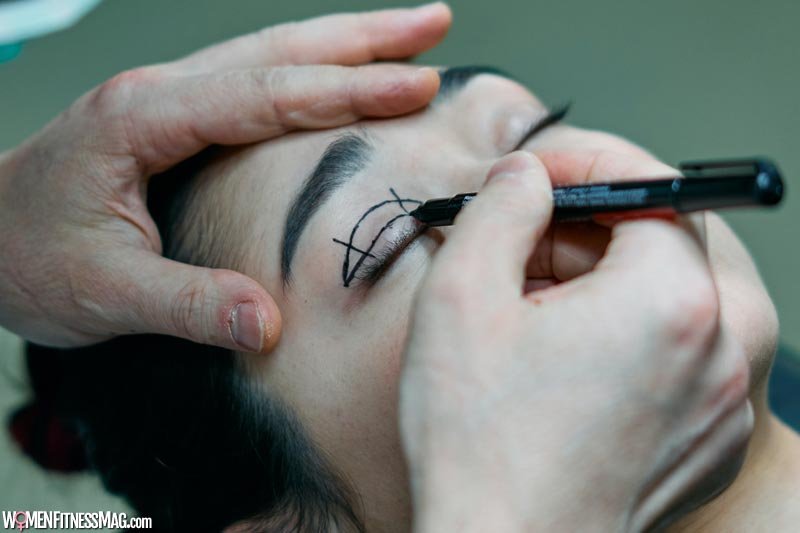Your Eyelid Surgery Recovery Guide : Eyelid surgery (blepharoplasty) is usually performed as an outpatient procedure. This can lead some patients to think recovery will be fast and easy. But is that really true?
Today, we will discuss why people get eyelid surgery, what the technique involves, and how to ensure your recovery goes as smoothly as possible.
What Is Eyelid Surgery (Blepharoplasty)?
Blepharoplasty is plastic surgery for the eyelids. It can involve either the upper lids, lower lids, or both.
What Do People Choose Eyelid Surgery?
There are several primary reasons people choose this procedure. Benefits of eyelid surgery include:
- A firmer, tighter appearance around the eyes
- Younger, more “awake”-looking eyes
- Removal of undereye bags
- Correction of fine lines and wrinkles
- Repair of previous surgeries, including tumor removal
- Correction of appearance issues due to medical conditions (such as thyroid eye disease)
- Better vision by lifting an eyelid that droops over the iris (colored part of the eye), a condition called ptosis
How Long Does Recovery From Eyelid Surgery Take?
You should begin to feel better and see swelling and bruising begin to go down in about two weeks. After that, it takes up to eight weeks for the eyes to look significantly better.
See the eyelid surgery recovery timeline below for details on what you can expect after your surgery.
How Is Eyelid Surgery Performed?
In order to understand your blepharoplasty recovery, it’s important to know what the surgery entails.
Remember that blepharoplasty, while performed on a relatively small portion of the face, is still surgery. Your plastic surgeon will decide the method that’s best for you, your past and current medical history, and your goals.
Most blepharoplasty procedures follow these steps:
- You will be made comfortable on a table, lying on your back.
- You will be given anesthesia. While some plastic surgeons prefer to administer general anesthesia, some procedures can be performed under a local anesthetic.
- Using a sterile instrument, the plastic surgeon makes incisions in the areas that need to be corrected. The surgeon will try to create incisions that leave as small a scar as possible. (For instance, for upper eyelid surgery, the incision will be made in the crease above the eye.)
- Excess skin and fat are excised (cut away).
- The incisions are closed with sutures (stitches).
Eyelid Surgery Recovery Timeline
Your recovery will depend upon several factors, including your overall health, the extent of the procedure, and how well you follow your surgeon’s post-operative instructions.
Most eyelid surgery patients can expect their recovery to follow the timeline below. Remember: if you have questions, call the surgeon’s office. They can guide you toward your best steps for a fast recovery.
Day One
You will not be able to drive yourself home after your procedure. Make sure you have a ride home.
You will be asked to get up immediately after your surgery. You may expect certain temporary side effects, including:
- Watery eyes
- Blurry vision and light sensitivity
- Numbness around the area
- Bruising and swelling
- Dizziness or nausea due to the anesthesia
All of these side effects are normal. However, be sure to ask your doctor what you can expect. It’s a good idea to ask for help from a friend or family member for the first week or two, especially if you’re dizzy or excessively tired.
Days Two to Three
You should feel fully “awake” from your surgery by now, but the area will be tender. Your doctor can provide medication to help with discomfort. You may also feel tightness and itchiness along your incisions. Try not to scratch or rub the area.
You will still be very swollen and bruised at this time. You may have a “double black eye” appearance.
Be sure to rest if you’re excessively tired. A daytime nap is a good idea. However, do not remain entirely inactive. Ask your doctor how much you should move around each day to aid your healing and prevent blood clots.
One Week After Surgery
Your sight should be clearer by now. If it isn’t, call your doctor for advice on what steps to take. In the meantime, you may experience dry eyes, especially if you strain your vision with too much time reading or including electronics.
Swelling beings to go down, though you will still have significant bruising.
Your stitches will dissolve at this point, or if you have been given non-dissolvable sutures, your doctor will have you come into the office to have them removed.
Two Weeks After Surgery
You should be able to go back to work at this point. Your plastic surgeon will let you know if you are healed enough to work. You should also be able to drive now.
Three Weeks After Surgery
Most postoperative patients can go back to wearing contact lenses at this time. Swelling is down significantly, and bruising will begin to lighten.
Six to Eight Weeks After Surgery
At this time, your doctor will let you know if you are cleared to resume all of your former activities, including working out and lifting heavy objects.
Two Months After Surgery and Beyond
After this time, it will take several more weeks before bruising disappears completely. Your scars should lighten to their final look in 12 to 15 months. Scars should be minimal, and you should have a younger, more “awake” appearance.
Enjoy your new look!
Related Videos about Your Eyelid Surgery Recovery Guide :
Your Eyelid Surgery Recovery Guide
upper eyelid surgery recovery day by day, upper eyelid surgery recovery time, one week upper eyelid surgery recovery day by day, day by day eyelid surgery recovery time photos, one month after eyelid surgery, 4 weeks post blepharoplasty,




